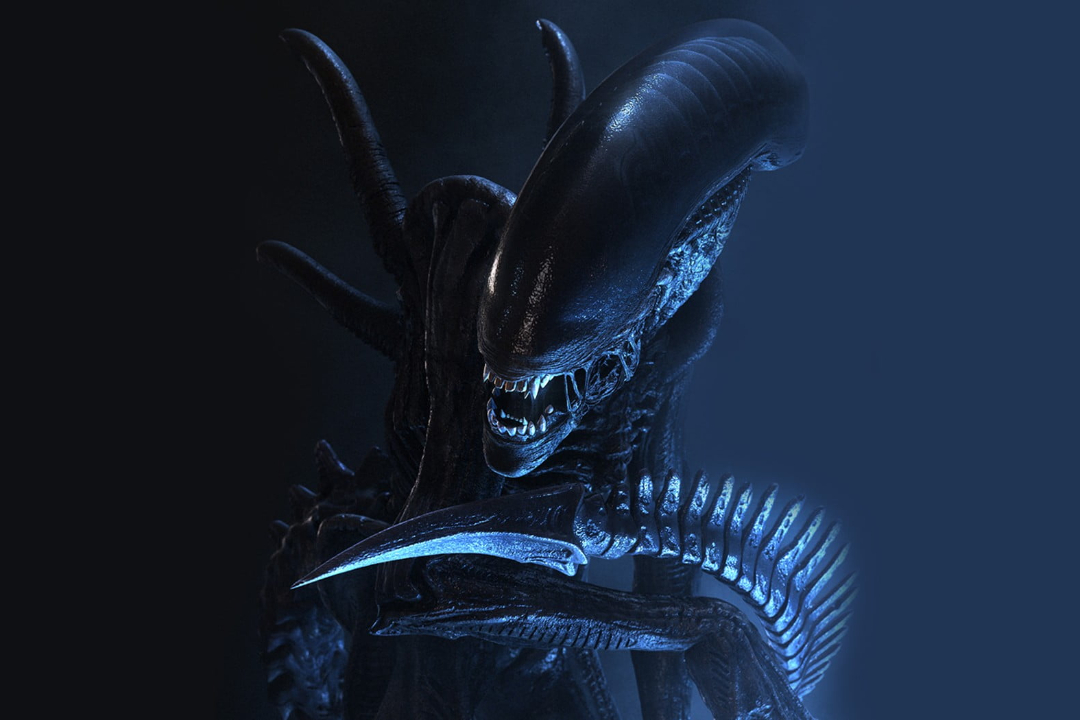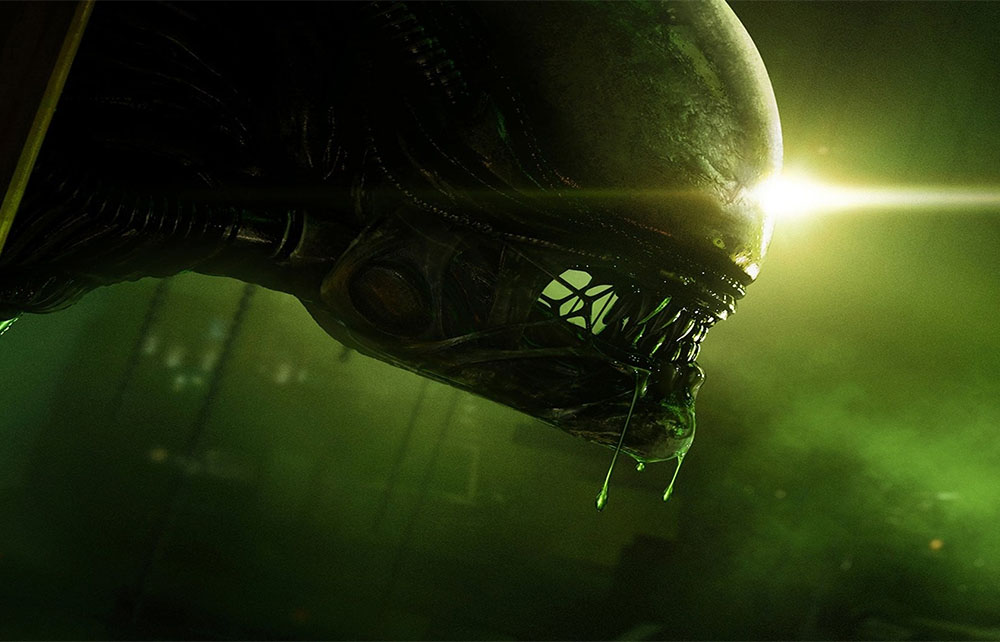Get ready to go on a journey into space for our next UNE Sci Flicks event this Thursday 22 September, at Armidale’s Belgrave Cinema.
UNE lecturer in parasitology, Dr Tommy Leung will unpack the science behind the fiction in the 1979 classic sci-fi blockbuster, Alien, and will take the audience on a deep dive into the world of parasites and alien creatures.
To give you a taste of what to expect, we had a chat to Dr Leung about some of film’s key themes, and whether we should be worried about coming across an alien parasite in space.

Image: Dr Tommy Leung is a UNE lecturer and researcher working on parasitism, symbiosis, evolutionary ecology and disease ecology.
Are there any parasites on Earth that are similar to the Xenomorph in Alien?
Oh, plenty. The first that comes to mind are parasitoid wasps – which may in fact be the most common type of animal on the planet. They lay their eggs in or on the body of terrestrial arthropods such as insects and spiders, and the larva consumes the host from the inside. They actually go about doing so in a manner as to keep the host alive for as long as possible, so it’s like a multi-course dinner with a set menu. First, they start by sipping the host’s hemolymph (an insect’s equivalent of blood), before moving onto chewing on the fat bodies, then munch on the gonads, before moving onto organs which are more vital for keeping the host alive.
One thing that some of those parasitoids do that the xenomorphs do not is that some of them actually turn the hosts into body guards. When the wasp pupates, it is vulnerable to predators and its own parasitoids (called hyperparasitoids), so they take control of the host so that it would sit on the pupating wasp cocoon like a brood hen, lashing out at anything that comes near. There are some parasitoid wasps that target spiders which make their spider host spin a special protective web for the wasp larva to pupate in as their last act of life. So these real life xenomorphs don’t merely consume the host from the inside before exploding out of their body, they make the host lavish tender love and care on their assailant, even while they are on the verge of death
Another group of parasites that is similarly gruesome are the entomopathogenic nematode worms – they’re used as a biological agent to control insect pests like lawn grubs. I’ve use them for one of my lab classes! These microscopic worms infect insects and kills them within 24 hours. They turn the insides of the insect into a nutritious goop which they feed on, and undergo multiple generations inside the insect’s body. So they raise a whole dynasty inside a dead bug, before a swarm composing of thousands of baby worms come leaking out of the insect’s body which is now nothing but an empty husk.
How do parasites survive?
There are as many different ways to be a parasite as there are not to be a parasite. There are some that live on the host’s body surface, others that live in their host’s gastrointestinal tract, or their body cavity, the muscles, the circulatory system, the eyes, the brain. In fact, just about every part of an animal’s body is potential home for some kind parasite. Each of those microhabitats presents different challenges. But the consistent challenge that all parasites have to overcome is the host immune system. The body isn’t going to take it laying down and even though 'parasite' is commonly used as a derogatory term for describing someone as lazy, parasitism is an extremely difficult way of life. A parasite is constantly under attack by all manner of host immune cells, antibodies, and enzymes.
How does the science stack up in the film? Is there a risk of coming across a deadly parasite in space?

Image: An image of the Xenomorph parasite.
Parasites have evolved to be able to make use of their host’s body, so they need to be specifically adapted to one particular group of organisms or even just one specific species. For example, a parasite that is specifically adapted to make a living inside a body of a crustacean is going to have a very hard (i.e. impossible) time trying to make sense of a mammal’s body and its organs. And as I mentioned above, a parasite also needs to evade the immune system, and you’re going to run into trouble if you end up being confronted with a different kind of immune system to the one you have evolved for. It’s like studying for the wrong test – but life-threatening (for the parasite).
And that’s just for Earth-bound parasites that have evolved alongside with life forms on Earth. If you come across an alien life form, that means it’s something that has evolved under a very different environment, with ecology, physiology, and biochemistry that are very different from ours, or anything on Earth for that matter. Therefore, the compatibility gaps will be insurmountable. Because of this difference in biochemistry, our body might be inedible or indigestible or even toxic to them, kind of like plastic for us.
So they might be dangerous for us, not because it can successfully infect us, but because its biochemistry might be so fundamentally different to us, that exposure to them might be harmful. In that sense, I have to give it to Alien for giving the xenomorph such acidic blood. Given what I have already talked about above, an alien parasite is going to have a very difficult (if not impossible) time trying to infect us.
Could parasites on Earth someday evolve to be as deadly as the one portrayed in the film?
They already are – just not to humans! Every day, there are caterpillars that are having the insides eaten away by parasitoid wasp larvae, or those same wasp larvae bursting out of their bodies, there are spiders weaving webs to the spell of their parasitoids, there are crickets and praying mantis that fall into ponds and streams and have long worms squirm out of their bellies (I’m talking about horsehair worms and mermithid nematodes).
But if you are talking about human parasites? Exploding out of a human’s body cavity is just not a very efficient way of making use of a large animal like humans. Most of the parasitic or infectious things that are deadly to human being are microscopic such as bacterial or viral infection, or protozoan parasite like the malaria parasite which uses mosquitoes as a vector (and mating site). It’s the microscopic things that you should be watching out for.

Image: An image of a parasitoid wasp, which has similarities to the fictional xenomorph parasite depicted in the film.
How can we protect ourselves from parasites?
Depends on where you are and what parasites you are talking, but basic hygiene measures would go a long way for a lot of them. Wash your hands, cook your food, avoid potential sources of infection – such as animal faeces, and oh, wear sandals when you’re walking on beaches that are frequented by dogs (to avoid hookworms). I know it’s not very exciting, but basic hygiene is one of your best front line defences against getting exposed to parasites.
What can we learn from the film?
How to do a good horror on screen. Even though the xenomorph is an iconic and immediately recognisable monster now, in Alien, the actual monster was only really visible for a few minutes in total. This gives the audience a lingering sense of dread throughout the whole film. This is something that the subsequent films seem to have lost. The sequel, Aliens, is a horror-action thriller – which is an excellent and iconic film in its own right that spawn many memorable moments and iconography. But in the subsequent films, as the xenomorph is on screen more and more often, and the films delve more into their lore, it made it a widely known and recognised thing, which diminish the horror and fear it can instil in the audience. In a good horror story, the most horrifying thing is not what is necessarily being shown on screen or what’s visible, but what the viewer is imagining (and dreading) in their mind.
You can hear more from Dr Leung this Thursday 22 September.
TIME: 6pm
LOCATION: Belgrave Cinema, Armidale
COST: $10 - pre-purchase your tickets here.


